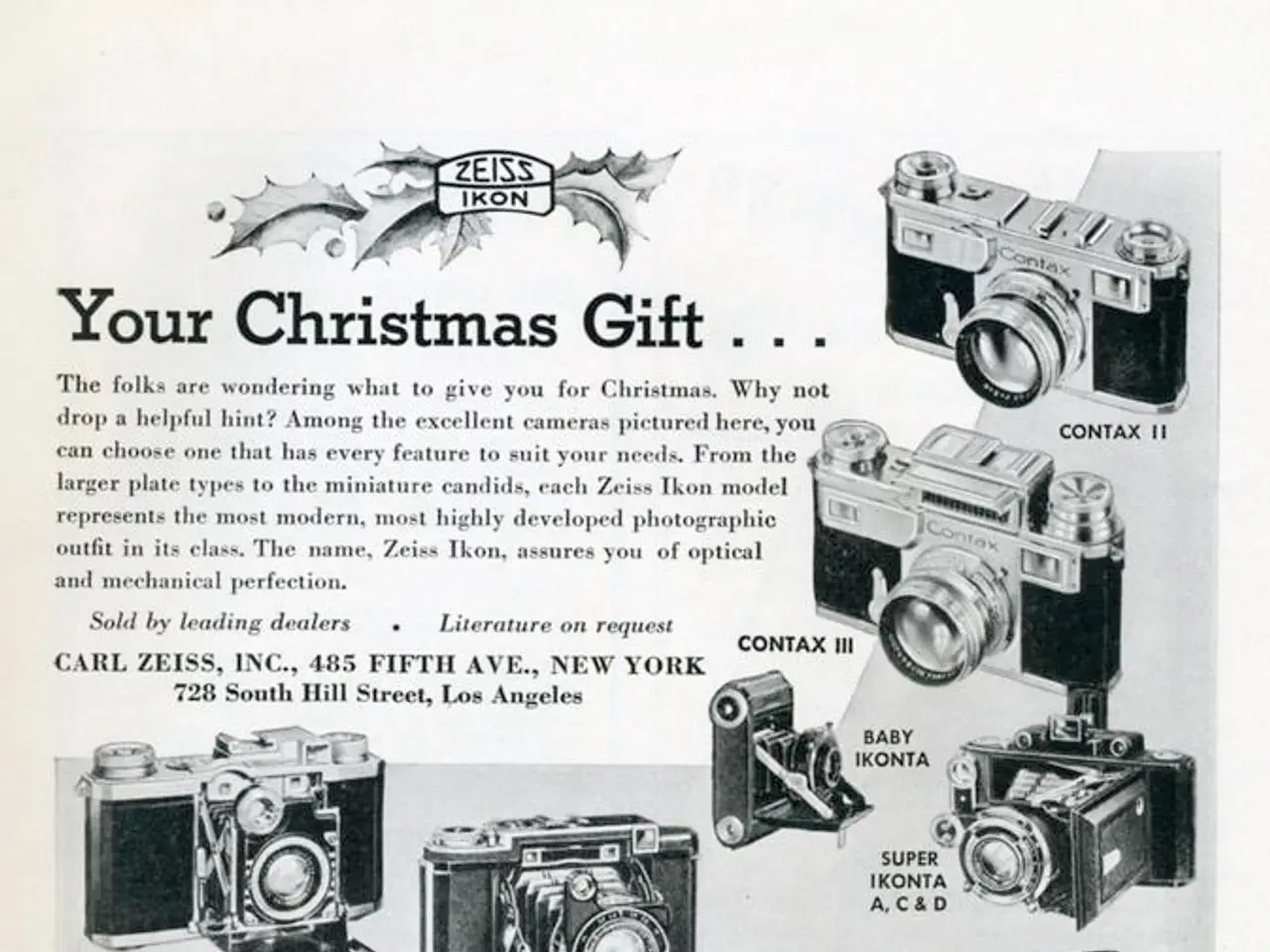Two cameras prove more advantageous than one, since no ideal camera can be found in reality
In the world of photography, the debate between using a single high-end camera and multiple cameras tailored to different use cases continues to rage. Each approach offers unique advantages and disadvantages, catering to different needs and preferences.
The Versatility of a Single High-End Camera
A single high-end camera is a versatile tool, combining many advanced features such as good resolution, fast autofocus, video capabilities, and more, making it suitable for a wide range of shooting styles [1]. The simplicity of learning and carrying just one system also adds to its appeal. Additionally, consolidated investment means avoiding the cost of purchasing multiple bodies and their accessories [4].
However, this versatility comes with compromises. High-end cameras that try to do everything often do many things "fairly well" but not exceptionally, which can limit creative or technical possibilities in specialized areas [1]. Relying on interchangeable lenses means time-consuming lens swaps that might cause missed shots during fast-paced events [1]. Moreover, high-end cameras can be heavy and bulky, possibly discouraging usage for casual or travel photography [2].
The Power of Specialised Cameras
On the other hand, using multiple cameras designed for specific uses can lead to superior results. For instance, a high-resolution still camera, a sports/action camera with fast burst rates, and a lightweight video camera can each excel in their respective fields [1]. This approach allows for faster adaptation to changing situations, reducing the risk of missed moments [1][3]. Each camera can also complement the others by covering gaps, such as one optimized for image quality and another for video stabilization [3].
The benefits of multiple cameras are particularly evident in jobs requiring both stills and video, such as weddings, where having separate cameras set up for each can improve workflow and output quality [1].
The Trade-offs
While the use of multiple cameras offers numerous advantages, it also presents some challenges. The upfront and maintenance costs of multiple cameras and lenses are higher compared to a single high-end camera [2]. Managing multiple systems adds logistical challenges and requires more expertise [3]. Differences in color rendering, resolution, and image quality may also require more post-processing to maintain a consistent look when combining images from different cameras [3]. Lastly, carrying multiple cameras and lenses can be cumbersome, especially for travel or casual shooting [3].
The Choice: Specialised or Versatile?
Professionals and enthusiasts who face varied and demanding photography needs often prefer multiple specialized cameras to maximize quality and efficiency in each use case. Meanwhile, casual photographers or those preferring simplicity may favour a single high-end camera that balances features adequately across situations, understanding the inherent compromises involved [1][2][3].
Ultimately, the choice between a single high-end camera and multiple specialized cameras depends on an individual's photography needs, budget, and personal preferences. Each approach has its merits, and understanding these can help photographers make an informed decision that best suits their unique requirements.
[1] Photography Life
[2] Digital Photography School
[3] Imaging Resource
[4] DxOMark
- In the realm of photography, the latest mirrorless camera with a high-resolution sensor and fast autofocus could be a suitable choice for anyone seeking versatility in their gear, catering to various shooting styles.
- When it comes to gear investment, choosing a single high-end camera means avoiding the extra cost of purchasing multiple cameras and their accessories, making it a more economic option for some.
- A disadvantage of using a single high-end camera is that its advanced features often do many things "fairly well" but not exceptionally, potentially limiting creative or technical possibilities in specialized areas.
- While a single camera can capture both stills and video, jobs requiring both, such as weddings, might benefit from having separate cameras set up for each, improving workflow and output quality.
- Embracing the path of multiple specialized cameras can lead to superior results for specific use cases, such as high-resolution stills, sports action, lightweight video, and more, each excelling in their respective fields.
- When using multiple cameras designed for specific uses, however, remember that their upfront and maintenance costs, as well as logistical challenges, can be higher compared to a single high-end camera.
- To maintain a consistent look when combining images from different cameras, managing differences in color rendering, resolution, and image quality may require additional post-processing efforts.
- For those already invested in a high-end DSLR camera, pairing it with gadgets like a tripod, external flash, and video mic could provide a boost to their photography and videography techniques.
- Increased technology advancements in camera, lens, and editing software mean more techniques and chances for innovations in the field of photography and video production, making this an exciting time for enthusiasts and professionals alike.




